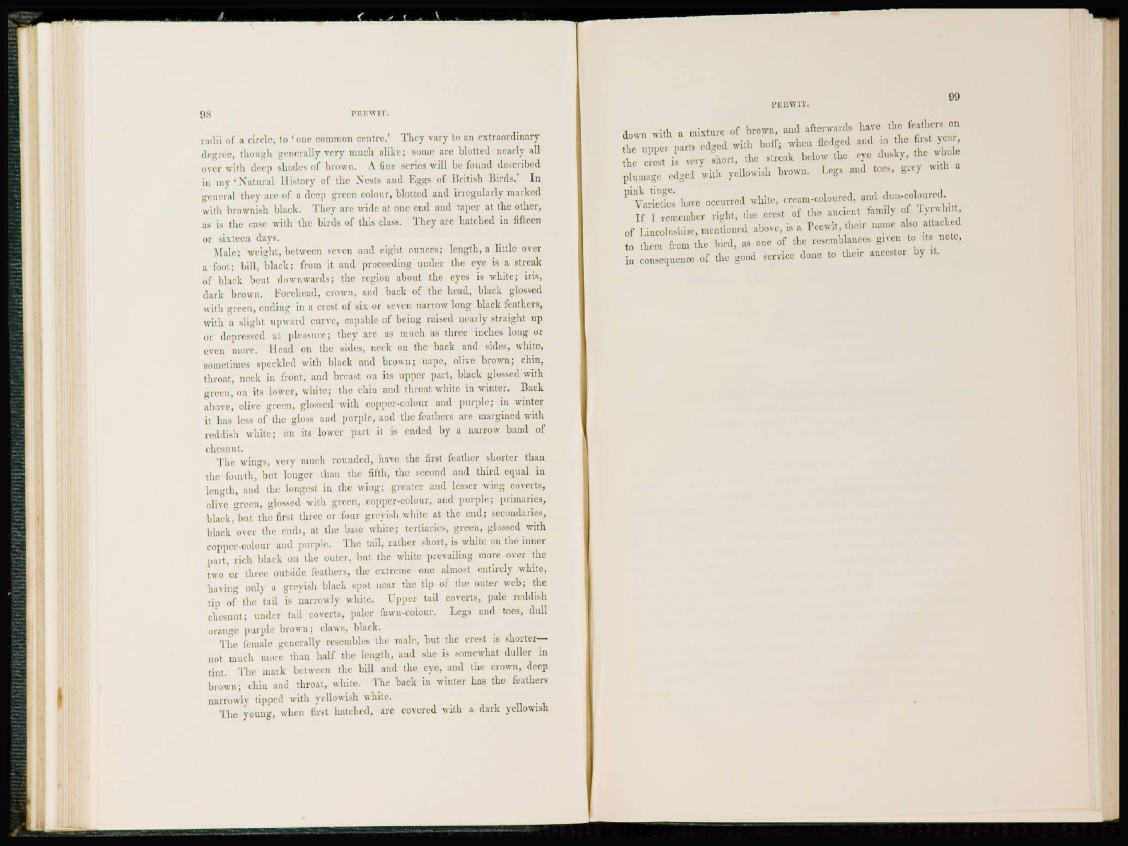
radii of a circle, to ' o n e common centre.' They vary to an extraordinary
degree, though generally very much alike; some are blotted nearly all
over with deep shades of brown. A fine scries will be found de.-ciibed
in m y ' N a t u r a l History of the Nests and Eggs of British Birds." In
general they arc of a deep green colour, blotted and irregularly marked
with brownish black. They are wide at one end and taper at the other,
as is the case with the birds of this class. They are hatched in fifteen
or sixteen days.
Male; weight, between seven and eight ounces; length, a little over
a foot; bill, black; from it and proceeding under the eye is a streak
of black bent downwards; the region about the eyes is white; iris,
dark brown. Forehead, crown, and back of the head, black glossed
with green, ending in a crest of six or seven narrow long black feathers,
with a slight upward curve, capable of being raised nearly straight up
or depressed at pleasure; they are as much as three inches long or
even more. Head on the sides, neck on the back and sides, white,
sometimes speckled with black and brown; nape, olive brown; chin,
throat, neck in front, and breast on its upper part, black glossed with
green, on its lower, while; the chin and throat wdiite in winter. Back
above, olive green, glossed with copper-colour and purple; in winter
it lias less of the gloss and purple, and the feathers are margined with
reddish white; on its lower part it is ended by a narrow band of
chesnut.
The wings, very much rounded, have the first feather shorter than
the fourth, but longer than the fifth, the second and third equal in
length, and the longest in the wing; greater and lesser wing coverts,
olive green, glossed with green, copper-colour, and purple; primaries,
black, but the first three or four greyish white at the end; secondaries,
black over the ends, at the base white; tcrtiaries, green, glossed with
copper-colour and purple. The tail, rather short, is white on the inner
part, rich black on the outer, but the white prevailing more over the
Two or three outside feathers, the extreme one almost entirely white,
having only a greyish black snot near the tip of the outer web; the
till of the tail is narrowly white. Upper tail coverts, pale reddish
chesnut; under tail coverts, paler fawn-colour. Legs and toes, dull
orange purple brown; claws, black.
The female generally resembles (be male, but the crest is shorter—
not much more than half the length, and she is somewhat duller in
tint. The mark between the bill and the eye, and the crown, deep
brown; chin and throat, white. The back in winter has the feathers
narrowly tipped with yellowish white.
The young, when first hatched, arc covered with a dark yellowish
down with a mixture of brown, and afterwards have the feathers on
the upper parts edged with buff; wheu fledged and in the first year,
the crest is very short, the streak below the eye dusky, the whole
plumage edged with yellowish brown. Legs and toes, grey with a
pink tinge.
Varieties have occurred wdiite, cream-coloured, and dun-coloured.
If I remember right, the crest of the ancient family of Tyrwhitt,
of Lincolnshire, mentioned above, is a Peewit, their name also attached
to them from the bird, as one of the resemblances given to its note,
in consequence of the good service done to their ancestor by it.